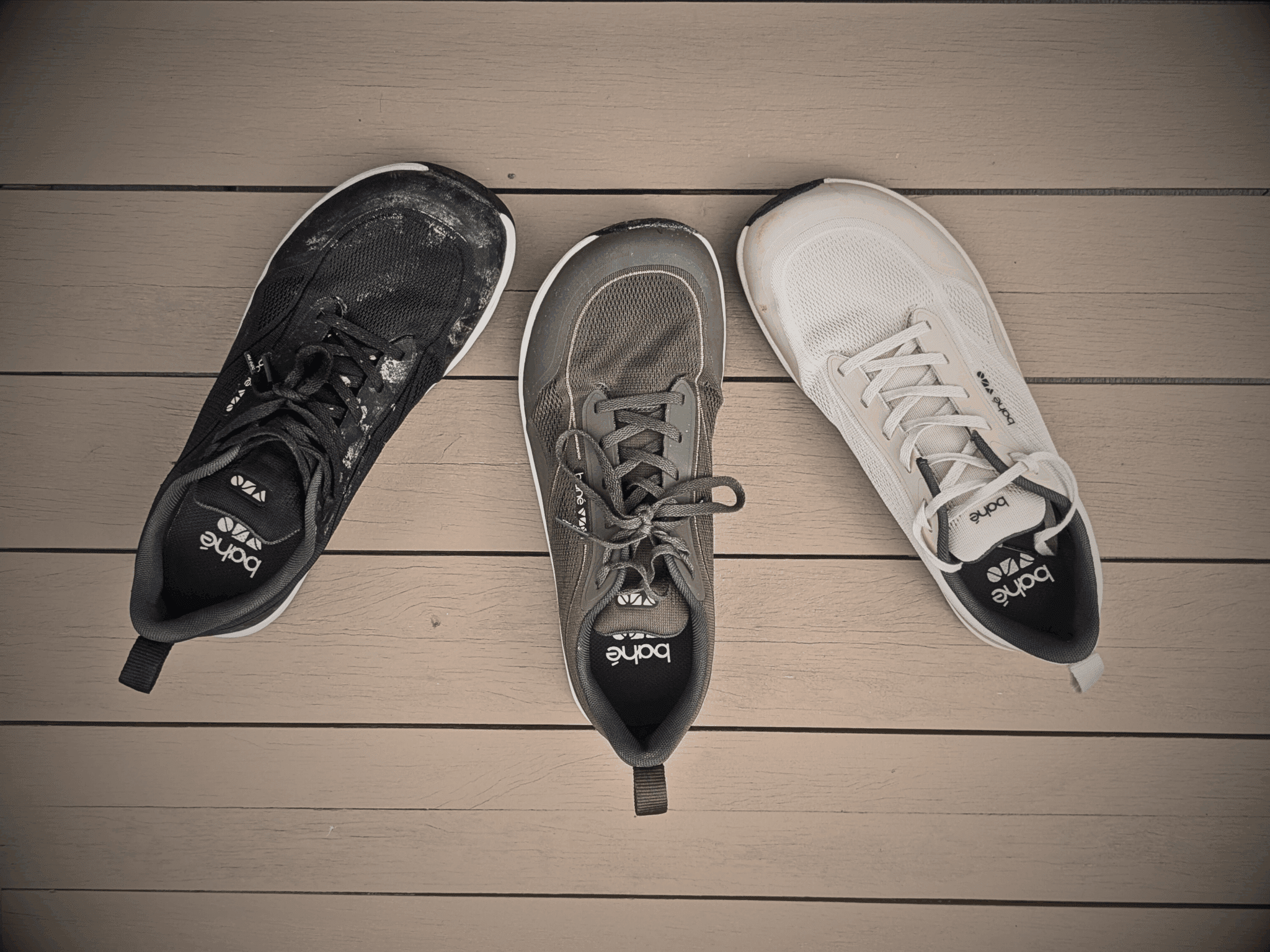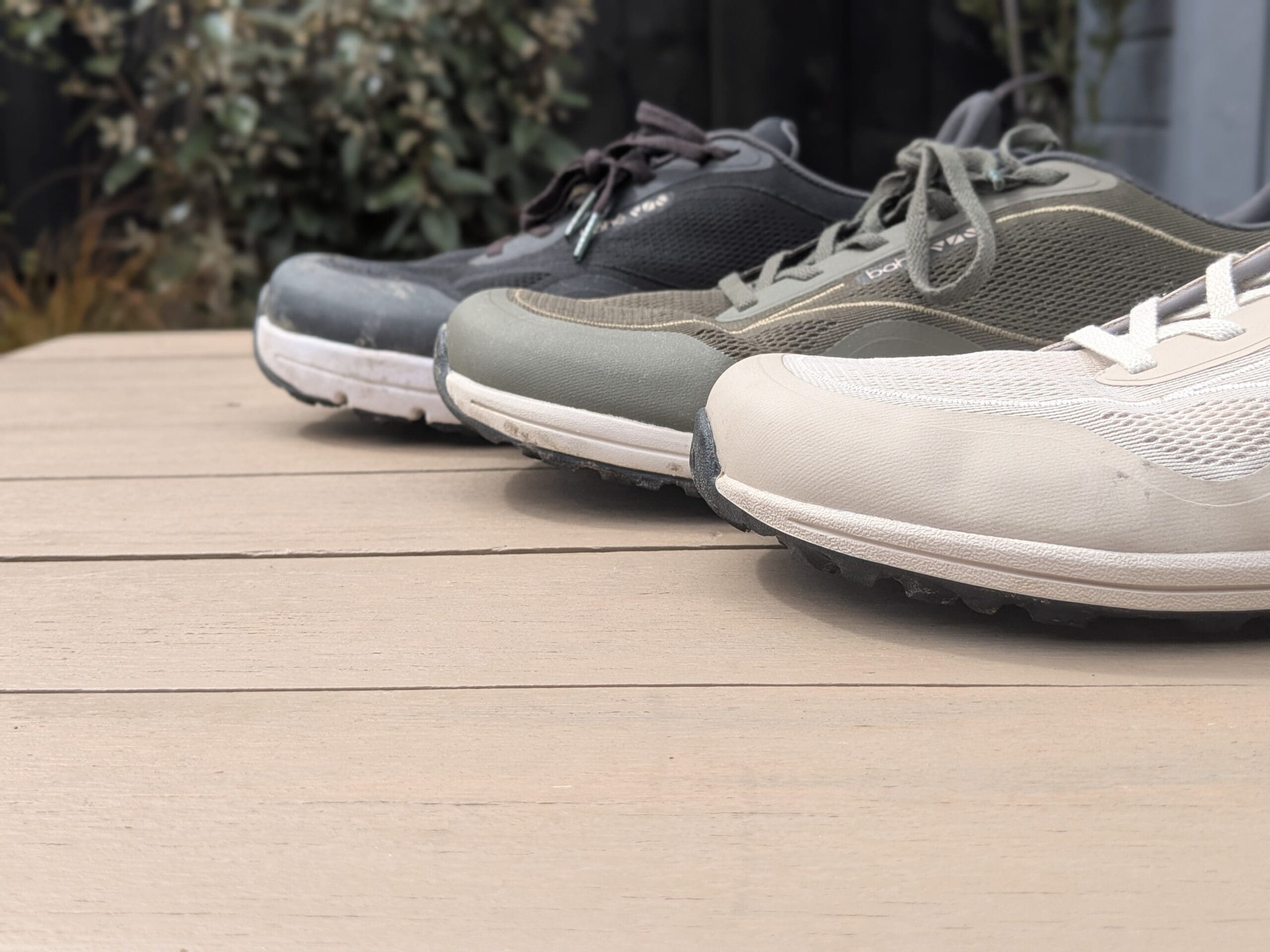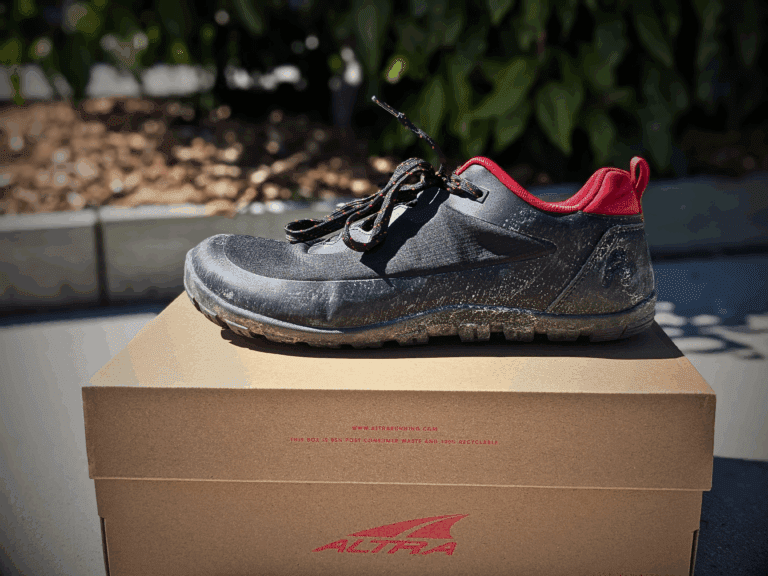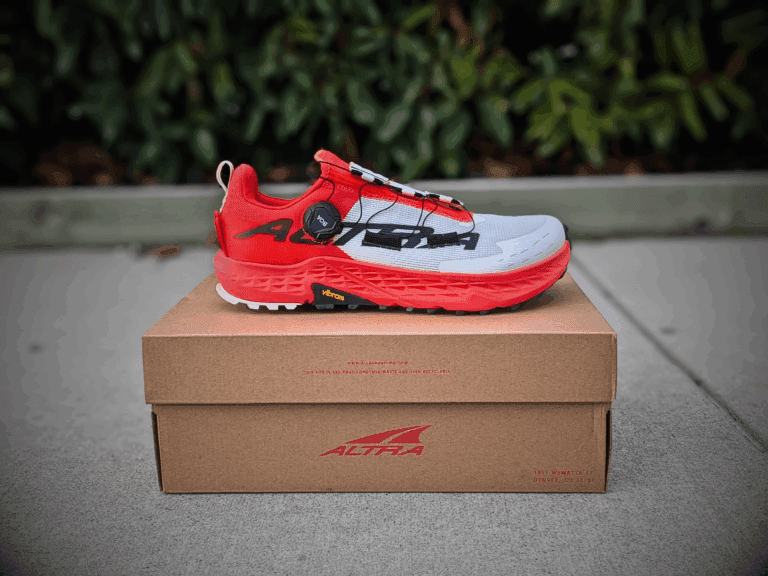Affiliate Disclosure: By clicking through the links on this page and purchasing the products, you’ll be helping me out. This is done because I receive a kickback from the sellers at no extra cost to you! Thank you so much for supporting us!
Weight
Flex: 328g | Adapt: 267g | Endurance: 307g (Mens UK8)
Stack height
Flex: 10mm | Adapt: 14mm | Endurance: 22mm
Zero Drop (all models)
Made for
Road & trail running
Barefoot transition
Grounding/earthing
Pros & Cons
✔ Identical upper and fit across all three modes
✔ Grounding technology built into all models
✔ True zero drop and barefoot construction
✔ Versatile for road and trail use
✔ Removable insole for customization
✖ No half sizes available
✖ Flex model surprisingly heavy (328g)
✖ Minor ankle collar rubbing for some
✖ 2.5mm lugs not ideal for muddy conditions
Use BRR10 for 10% off!
When a brand launches three versions of the same shoe with just stack height changes, you’d think the differences would be superficial. But Bahé’s new Revive Modes prove that’s not necessarily the case. What we have here is a genuinely thoughtful progression of versatile, grounded shoes that each carve out a legitimate place in a runner’s rotation—if you pick the right one (or two) for your needs.
I’ve been waiting for a brand to approach cushioning like this—as a genuine design choice rather than a marketing afterthought. Instead of making three completely different shoes, Bahé kept the fit and upper identical while tuning stack height.
That’s the kind of intentional product thinking that gives you real choice—not just different shoes for different runners, but adaptability within a runner’s own rotation. You can choose your preferred stack, and you can also adapt to your run conditions, how your body feels, or your day’s training goal.
I’ve spent time on all three: the Flex (10mm), the Adapt (14mm), and the Endurance (22mm). Let me walk you through what sets them apart, what they all share, and most importantly, which one makes sense for you.
Which minimal running shoe is for you?
Take a quick 5-question quiz to identify the perfect minimal running shoe for your feet! You'll get both road and trail options based on your answers!
Here’s what you’re getting across the entire range:
Shared across all three modes:
- Identical upper and fit
- Grounding technology (Ground Flow System)
- Zero drop and completely flat construction
- No medial arch support, heel counter rigidity, pronation control, or toe spring
What changes per mode:
- Midsole stack height tuned for each mode’s intended use
- Outsole coverage and lug patterns adjusted to match stack height
- Weight variation: Flex 328g, Adapt 267g, Endurance 307g (all Mens UK8 EU42)
The barefoot construction: All three modes are built on the same barefoot principles—zero drop, completely flat construction, with no arch support, pronation control, or toe spring. Your feet do the work throughout the range.
Here’s the good news: if the fit works for you in one mode, it works in all of them. The upper is identical across the entire range, so you’re getting the same experience whether you’re in the Flex or the Endurance.
The fit has been refined compared to the original Revive, and it shows. The upper is now more flexible, which makes the overall fit more comfortable and accommodating for a wider range of foot shapes. The toe box is nicely squared off—giving your toes plenty of room to splay naturally. This flexibility improvement is one of the Revive’s genuine strengths, and it carries through the whole range.
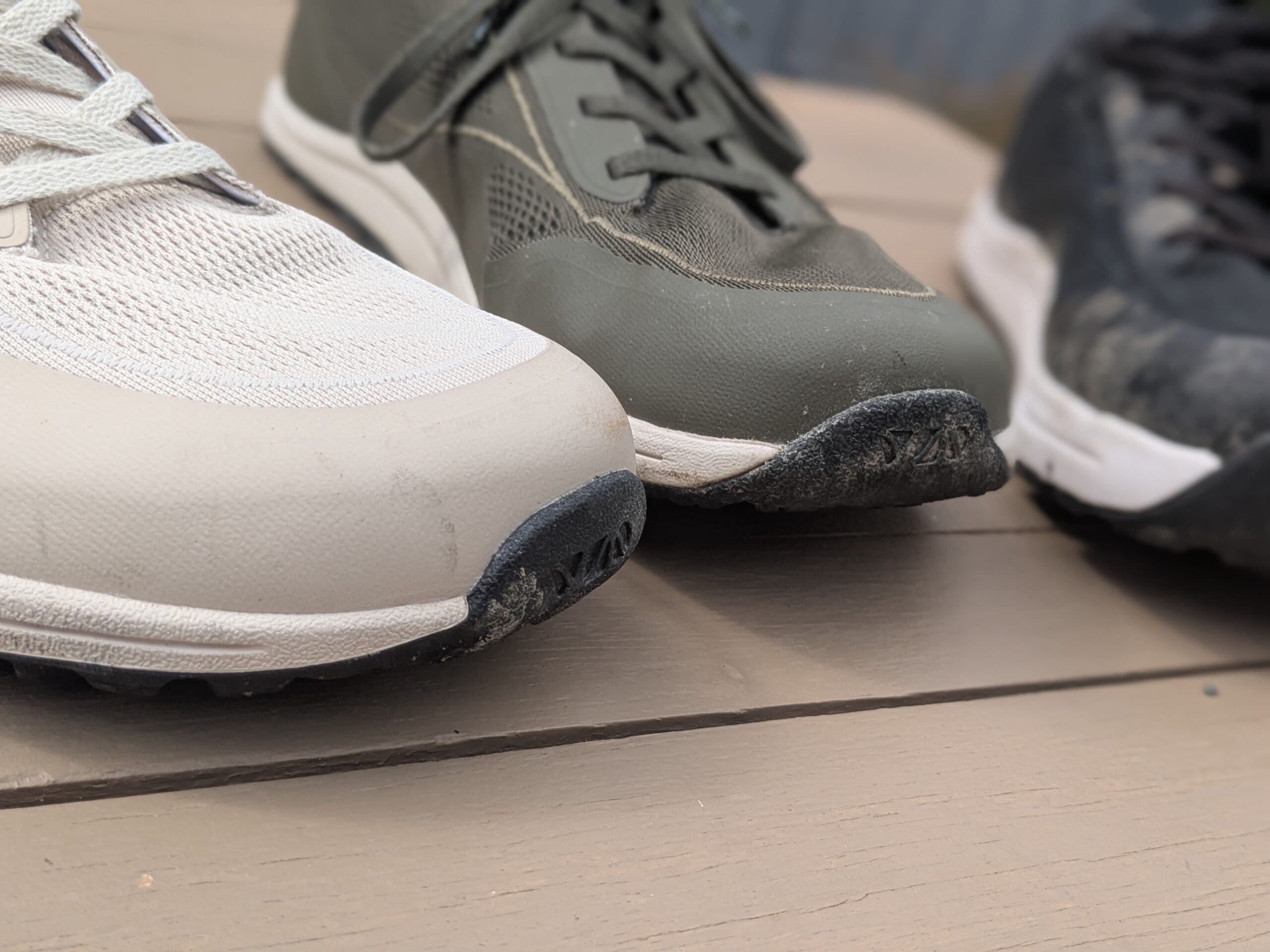
I do need to flag one small thing: there’s minor rubbing on the big toe side if you’re running in smaller sizes or have a narrower foot. I’ve found that going up a half size would have solved this, but Bahé doesn’t offer half sizes. If you’re between sizes, go up rather than down—you’ll get better length in the shoe, and the extra volume actually helps with comfort and toe mechanics.
The heel cup has been refined with a cutaway that makes it less aggressive than the original Revive. This was a smart move—previously, I had a little rubbing in the heel with the original, and this lower, cut-away design has eliminated that issue. However, because the overall shoe is quite deep, the ankle collar still sits relatively high, and I have felt a tiny bit of rubbing.
It didn’t escalate into anything significant, even after longer 25k runs. When I mentioned this to the Bahé designers, they noted that they’ve actually opened up the ankle opening a bit and softened the collar fabric specifically from the original Revive—which is likely why the rubbing didn’t get worse in my testing. That said, if you’ve had ankle collar sensitivity in other shoes, you’ll probably feel something here too. If you have a history of this issue, consider doubling up with insoles to lift your heel slightly—this reduces how high the collar sits relative to your ankle bone. Something worth knowing going in, but not a dealbreaker for most runners.
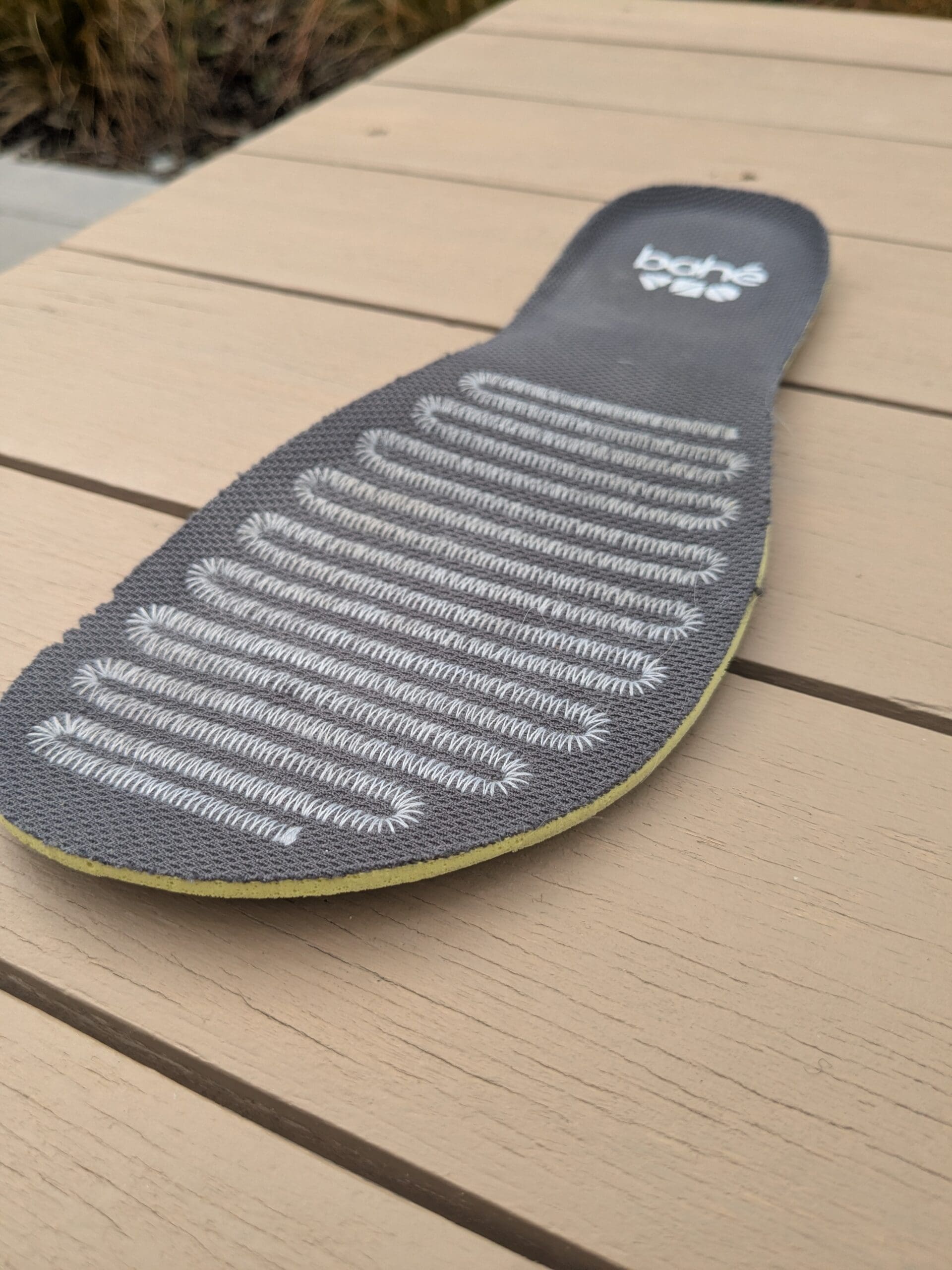
The lacing system is a nice touch. Bahé updated the laces to higher-quality cotton (no longer fraying as badly) and, more importantly, switched from rounded eyelets to slit-style eyelets. This keeps the lace flat and prevents slipping during runs, which is genuinely helpful on trails when you’re sliding side to side. The heel tab is functional and appreciated if you like the convenience of a pull tab—though it’s not essential.
One more detail: you can remove the insole from any mode and get the same material footbed underneath. This is a brilliant design. It gives you more volume in the shoe (great if you need a bit more room or width) and enhanced ground feel if you want it. I’ve been running all three with and without the insole, and the versatility this adds is excellent.

Bahe Revive Modes
Use BRR10 for 10% off!
This is where you start to see the intentionality behind the three modes. The changes aren’t just about stack height—Bahé has tuned midsole firmness, outsole coverage, and flexibility features to create genuinely different rides.
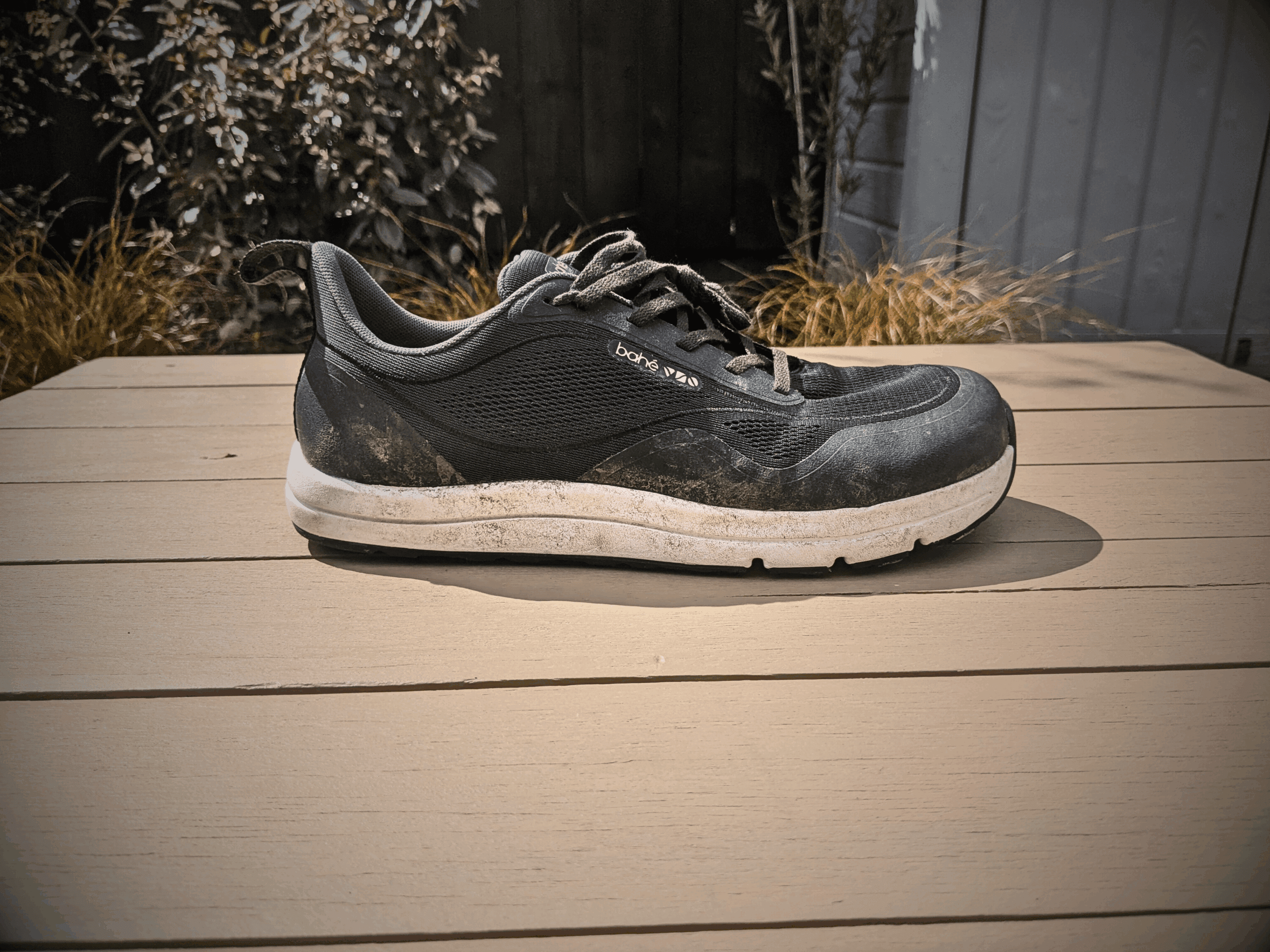
Revive Endurance (22mm)
The Endurance is the most cushioned shoe in the range, and it feels like it. At 22mm (19mm without the insole), you’re getting a proper cushioned platform—but here’s the thing: it never feels unstable or mushy.
The midsole is firm enough to prevent that mushy, rolly sensation I sometimes get in overpadded shoes. Take an Altra Escalante—great shoe, but it can feel unstable underfoot at times. The Endurance doesn’t have that problem. The result is a genuinely locked-in platform that feels protective without sacrificing ground connection—perfect if you’re transitioning from traditional running shoes.
Bahé has engineered flexibility into this shoe through cutouts in both the midsole and outsole at the forefoot. This is necessary because of the higher stack height—without it, the Endurance would feel rigid. The result? For a heavily cushioned shoe, it still offers decent forefoot flexibility.
The weight is 307g, which is noticeable compared to the other modes—but it’s a direct trade-off for the full rubber outsole coverage and the conductive grounding technology that runs through the shoe. If you’re looking for a lightweight shoe, this isn’t it.
The feel underfoot is interesting here: you still get feedback from the ground—you’re not sinking into a cloud of cushioning. But there’s enough protection that you can run with confidence, especially useful for longer efforts or if you’re trying zero-drop technology for the first time.
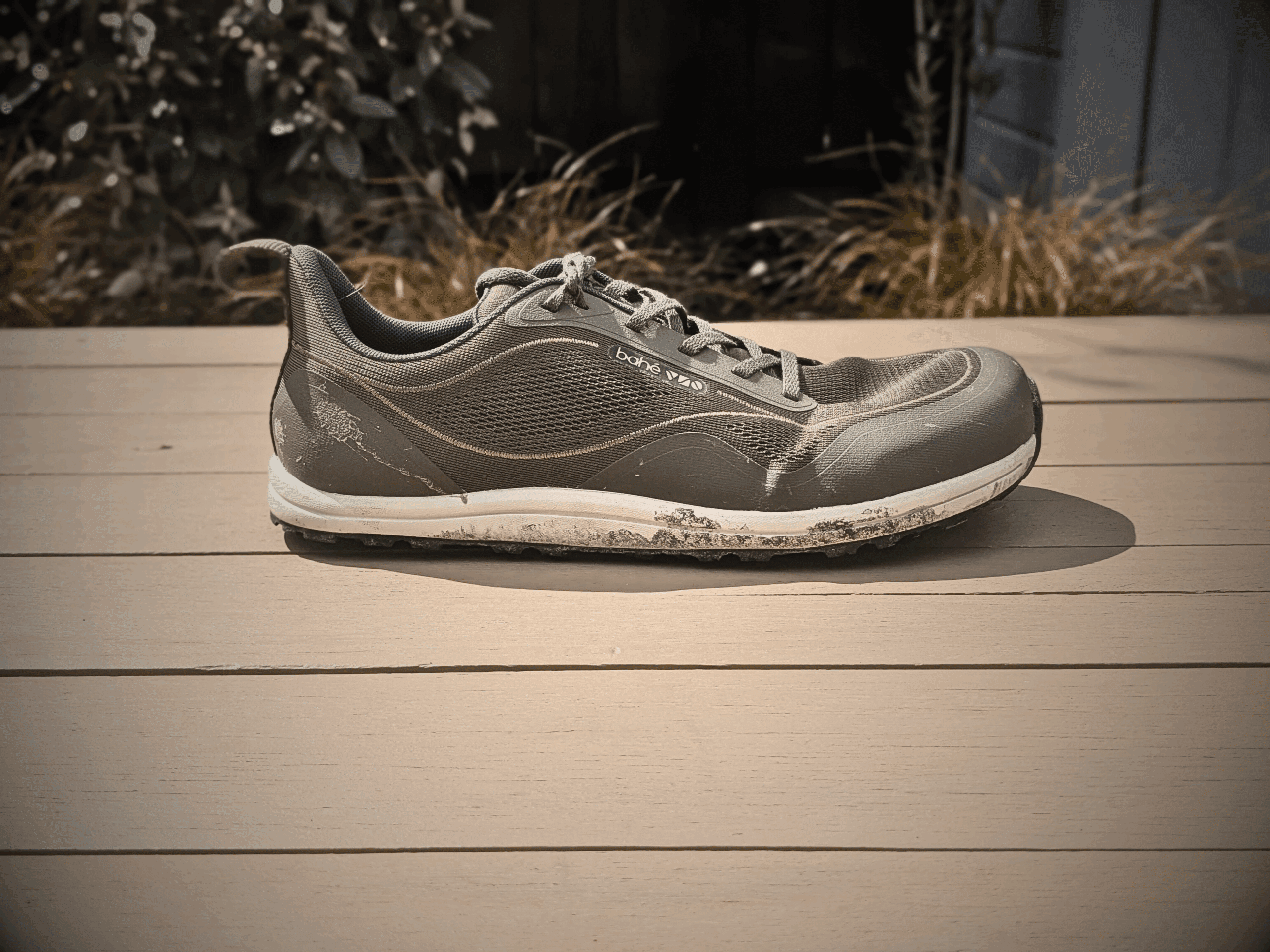
Revive Adapt (14mm)
This is the do-everything shoe. At 14mm, the Adapt sits at the same stack height as the original Revive, and it feels like the Goldilocks option of the range—not too minimal, not too cushioned.
The Adapt strikes a nice balance. It’s cushioned enough that long runs feel comfortable, but connected enough that you still have real ground feel and natural mechanics. I’ve been using this shoe for everything—road tempo runs, easy recovery days, gravel explorations, single-track trails, muddy mess, and even a little snow—and it just works.
This is partly because Bahé has tuned the midsole firmness perfectly. It’s soft enough to feel forgiving over longer distances, but firm enough to maintain stability and lateral control. You feel the ground, but you’re not fighting to stay stable. On the road, it’s responsive and snappy. On trail, it’s planted and confident. The only time I’d want less cushion is for true barefoot training on the road.

At 267g, the Adapt is also the lightest shoe in the range—which is interesting because it’s not the most minimal. This suggests Bahé has optimized the outsole design and rubber compound specifically for this mode, and it shows. And if you take out the insole, that drops to ~237g, which is truly putting it in lightweight territory.
The versatility here is genuinely excellent. I can see this working as someone’s only shoe across different terrains and distances. It’s the mode I’d suggest to barefoot runners who want a little cushion, and those partway through their barefoot transition. Oh, and it also hits the sweet spot for trail protection.
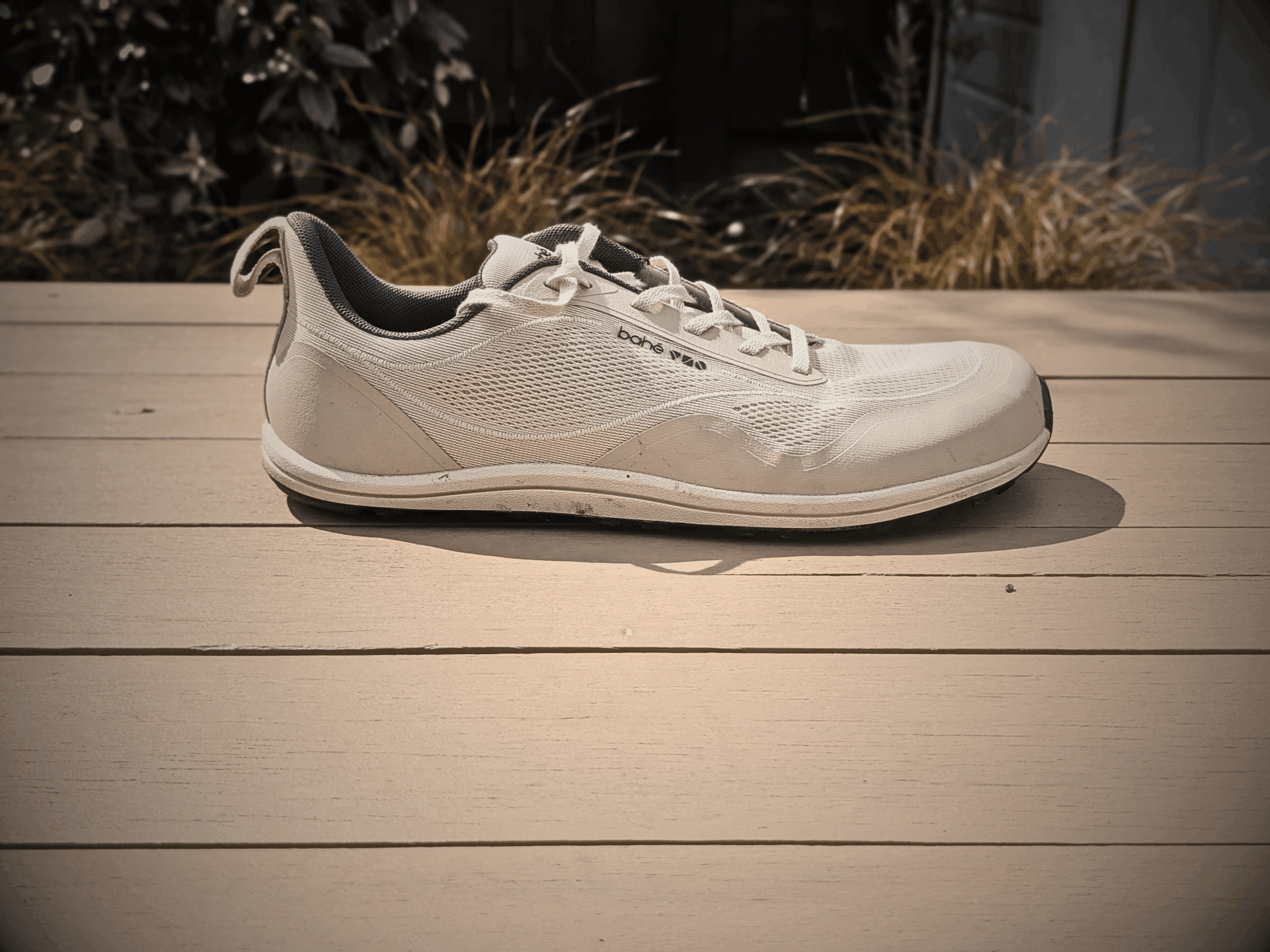
Revive Flex (10mm)
Here’s where I need to be honest: the Flex is a bit of an odd duck in the range. That doesn’t mean it’s a bad shoe; it’s not, but I’m finding it hard to know when to recommend it.
At 10mm (including the 3mm insole), the Flex is the most minimal option, and it should feel noticeably different from the Adapt. But it doesn’t—not in a way that justifies the weight gain. And if you run the Adapt without the insole in, you’re down to 11mm anyway!
The Flex does give you more ground feel, especially if you remove the insole to drop to around 7mm of actual cushioning. But the difference between the Flex and Adapt is smaller than the difference in stack height suggests. Run the Adapt and you’re still getting plenty of ground feel. Run the Flex and you think, “Okay, I feel the ground more, but… I also want even more connection than this if I’m dropping 4mm of stack and gaining 61 grams.” I would have loved to have seen this model drop almost all the cushion and make it a barefoot training shoe.

The weight is the bigger issue. At 328g, the Flex is the heaviest shoe in the range. This doesn’t make sense for a minimal shoe. This all comes down to the full-outsole coverage that wraps around the midsole. But from a user perspective, you’re running a minimal shoe that weighs more than the cushioned Endurance. That’s a weird trade-off.
And I think that’s just it. This isn’t a running shoe, and that’s okay. If you want the most minimal and flexible grounding shoe on the market, the Flex is it. It’s a sharp-looking shoe that works as a casual option or walking shoe. It’s a bit of a case of “it’s me, not you”—I’m a runner, and you may not be, so that weight might not matter.

Bahe Revive Modes
Use BRR10 for 10% off!
How Do They Handle Different Surfaces?
I’ve tested all three on road, gravel, single-track, and muddy trails. With 2.5mm lugs, none of these are ideal mud shoes—but that doesn’t mean they’re bad on trail.
The Adapt and Flex are better choices for trail work, primarily because the lower stack gives you more direct ground feedback. That increased proprioceptive input actually helps with stability—you feel what’s underneath and can adjust naturally. The Endurance still handles the trail well, especially if you’re transitioning from higher-stack shoes and want that extra protection on technical terrain. But for me, the low stack modes win on trail every time. That ground connection is worth more than the cushioning buffer.
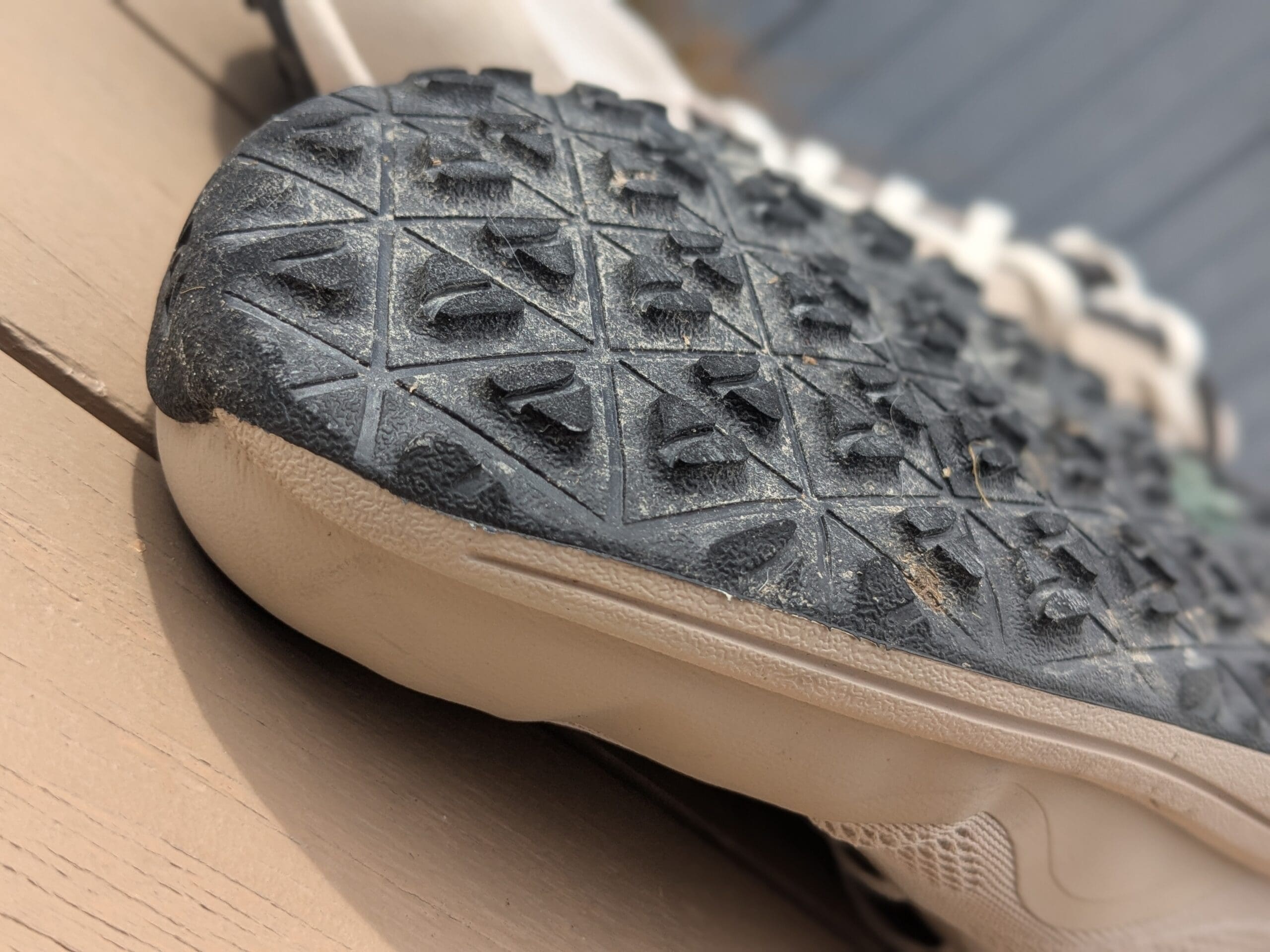
On dry trail and gravel, all three are impressive. The lugs give enough grip without being overkill. On wet rocks, traction is also decent as the rubber is slightly tacky, similar to Vibram offerings. The trade-off is that you get a versatile shoe that doesn’t sacrifice on-road performance for aggressive trail tread.
What About the Grounding Technology?
Bahé has built a “Ground Flow System” into these shoes—conductive material woven through the outsole, midsole, and insole that allows your feet to maintain electrical contact with the Earth. When you run on natural surfaces like grass, dirt, or gravel, you’re electrically connected to the ground throughout your run.

The theory behind grounding (or earthing) is that this electrical connection offers benefits like better sleep and reduced inflammation. There is some peer-reviewed research exploring these effects—a 2015 study in the Journal of Inflammation Research examined grounding’s impact on inflammation and immune response, and a 2022 pilot study found grounding improved sleep quality in patients with mild Alzheimer’s disease. However, the science is still emerging with limited large-scale studies. It’s an interesting area, but not settled science.
Here’s my honest take: I’d buy these shoes regardless of the grounding tech because they’re genuinely good shoes first—zero drop, flat, versatile across three stack heights, and well designed. The fact that the grounding technology is here is awesome. It’s great that Bahé is committed to this option, and if it benefits you, fantastic. But shoes stand out regardless of the grounding technology.

Bahe Revive Modes
Use BRR10 for 10% off!
Since all three modes share the same upper and outsole design, durability differences mainly come down to the midsole. Early indicators are emerging already.
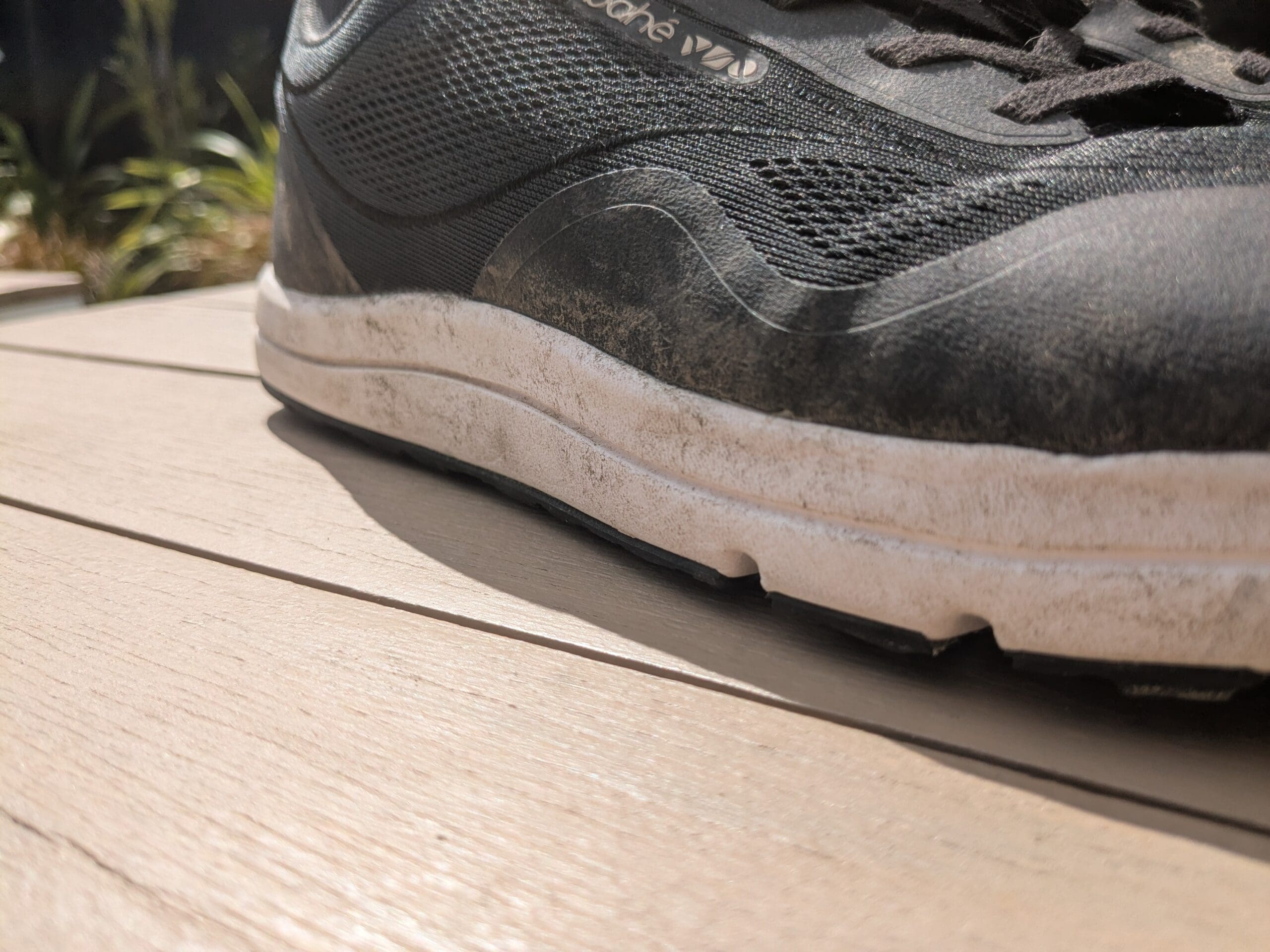
The Endurance has the most cushioning, which means more midsole material that can pack down unevenly over time. This could potentially introduce instability. That said, because the midsole is firmer than most other cushioned shoes, this isn’t a huge concern—it’s just the trade-off that comes with higher stack height shoes.

The Adapt feels like the sweet spot for durability. The balanced stack and midsole firmness mean you’re not overworking the structure in any direction. Still, the midsole will pack down, but the effects will not be as extreme as the Endurance.

The Flex, with minimal cushioning, will pack out the least, and thus will be more even over time. This is why barefoot shoes can often last longer than cushioned shoes.
One durability note across the range: Watch the upper around the flex slits on the Endurance, and monitor the crease points created by the midsole/outsole cutouts. These are designed well, but they’re stress zones. At these points, the upper material folds inward slightly with each stride. There’s good reinforcement with overlays on the stress points, but long-term wear at these creases is something I’ll be tracking.
Outsole durability is use-case dependent. I’m already seeing minor lug wear after about 50km, so if you’re running primarily on road, expect the lugs to wear down fairly quickly. On road though, this isn’t really a concern—you don’t need aggressive tread there anyway. On trail, worn lugs become more relevant; reduced grip on technical ground or wet rocks is noticeable. So outsole durability isn’t a universal issue here—it comes down to where you’re using the shoe. High road mileage? Lugs will flatten. Mostly trail? You’ll need to monitor for grip loss.
The inner lining feels durable across all modes—no issues there. The tongue is a nice design that thins toward the top while staying high enough to protect against lace bite, even with tight heel locks.

Bahe Revive Modes
Use BRR10 for 10% off!
If you want one shoe for everything and versatility is your priority: Get the Adapt (14mm). It’s the lightest, most balanced, and most forgiving. It handles road and trail equally well. It’s responsive enough for speed work but comfortable enough for long, easy runs. This is the do-everything shoe.
If you’re coming from traditional running shoes and want cushioning with real ground feel: Get the Endurance (22mm). It protects without the squishy, unstable sensation. The flexibility keeps it responsive. Great for long runs or if you’re nursing something.
If you specifically want maximum ground feel and ultra-minimal stack, Get the Flex (10mm). But go in knowing that the Adapt will give you 95% of that ground feel experience at a lighter weight and with more versatility. The Flex works if minimal is your obsession, not if you’re just curious.
For me? The Adapt is staying in my rotation as a true all-arounder. The Endurance is there for when I want to go longer and don’t mind the extra weight. The Flex? That’s becoming my casual option—it’s a sharp-looking shoe and works great for everyday wear and walking, even if it’s not my choice for running.
Bahé’s done something impressive here. They’ve created a genuine range where each mode has a real purpose. The upper consistency keeps things simple. The fit works across the board. And the progression of stack heights, when paired with smart midsole tuning, actually creates meaningfully different experiences.

Bahe Revive Modes
Use BRR10 for 10% off!
